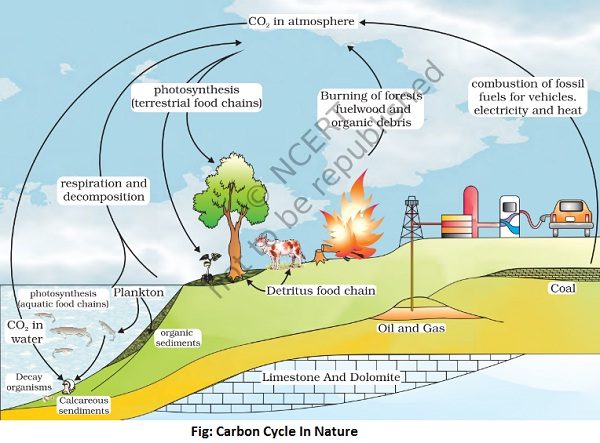
Carbon Cycle:
The carbon element is often considered as the basis of all life. Carbon is a basic constituent of living organisms. In fact, carbon is the most essential constituent of all the major organic compounds of the protoplasm (living substance) like carbohydrates, fats, proteins, and nucleic acids. In other words, the carbon element exists as carbohydrates, fats, proteins, and nucleic acids in the living organisms. Carbon is transferred through the food chain in the form of various organic compounds. It is clear from this discussion that carbon is the basic component of all organic compounds of which all living things are made. Atmospheric carbon dioxide serves as the source of carbon for the synthesis of organic compounds in autotrophic plants (or green plants). In fact, the earth’s atmosphere is the main reservoir of gaseous carbon (in the form of carbon dioxide gas, CO2), whereas oceans are the main depositors of biological carbon. In the atmosphere, carbon elements are present in the form of carbon dioxide gas, CO2 in combination with the oxygen element. The concentration of carbon dioxide in the atmosphere is about 0.033 percent. Carbon dioxide is the major source of carbon for photosynthesis. The organic compounds prepared in photosynthesis are passed from plants (producers) to the herbivores and carnivores (animal consumers). Carbon dioxide returns to the atmosphere through the respiration of plants and animals, the decay of dead bodies of plants and animals, and the combustion of fossil fuels. Thus, a carbon cycle (also known as carbon dioxide cycle) is operating in the biosphere, as a result of which the proportion of carbon dioxide in the atmosphere remains almost the same.
The main steps of the carbon cycle in nature are as follows-
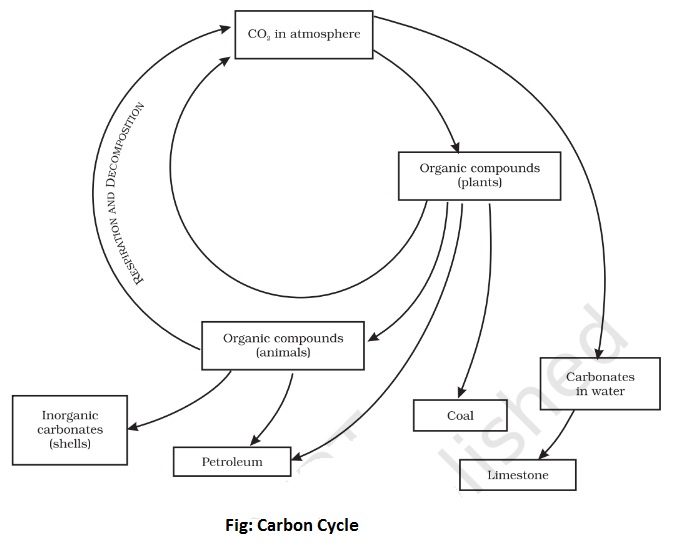
- Carbon is present as carbon dioxide gas in the atmosphere. The green plants take up this carbon dioxide gas from the atmosphere and convert it into carbohydrates by the process of photosynthesis. In fact, the major process by which carbon dioxide is removed from the atmosphere is photosynthesis by green plants. The photosynthesis process occurs on land as well as in water. Some carbon dioxide is also present in dissolved state in water, so there is a continuous exchange of carbon dioxide between the atmosphere and water bodies like oceans. This carbon dioxide is utilized for photosynthesis by aquatic plants (water plants). Some of this dissolved carbon dioxide is also trapped to form limestone (Calcium carbonate, CaCO3) and other carbonate rocks.
- The green plants (and their products) are eaten up by animals as food. So, carbon in the form of plant carbohydrates travels as food to the animals in successive trophic levels.
- When the plants and animals undergo respiration, they give out carbon dioxide. Again, when the dead plants and animals decay (decompose), they produce carbon dioxide. The carbon dioxide produced by the respiration and decay of plants and animals is returned to the atmosphere. The micro-organisms called decomposers play an important role in converting dead organisms (dead plants and animals) into carbon dioxide and returning it to the atmosphere (and water bodies). Thus, plants and animals release carbon dioxide to the atmosphere as a by-product of respiration, as well as result of decay of their dead bodies. In this way, a part of the carbon cycle is completed in nature. Please note that the animal waste products like urine also release carbon dioxide on decomposition by micro-organisms.
- Some of the dead plants and animals which get buried deep under the earth escape oxidation and change into fossil fuels like coal and petroleum through slow chemical changes. Petroleum gives us fuels like kerosene, petrol, and diesel. Now, when the fuels are burnt they produce carbon dioxide. Thus carbon dioxide is also returned to the atmosphere through the combustion of various fuels like coal, wood, natural gas, petrol, kerosene, diesel, etc.
- Volcanic eruptions also release carbon dioxide gas into the atmosphere. The carbon dioxide comes from the decomposition of carbonates minerals buried under the earth. Carbon dioxide is also released into the atmosphere when acid rain falls on the carbonate rocks such as that of limestone or on inorganic carbonate shells. The carbon of limestone and other carbonate rocks is also slowly converted to carbon dioxide by the acid produced and excreted as a result of the metabolic processes of soil micro-organisms and plant roots. In this way, the carbon cycle in nature is completed.
From the above we conclude that the various processes which remove carbon dioxide from the atmosphere are-
- Photosynthesis by green plants (main CO2 remover).
- Formation of fossil fuels.
- Formation of carbonate rocks.
- Formation of inorganic carbonate shells and skeletons.
On the other hand, the process which adds carbon dioxide to the atmosphere is-
- Respiration of plants and animals.
- Decay (decomposition) of dead organisms (dead plants and animals).
- Burning of fossil fuels.
- Volcanic eruptions.
- Action of acid rain etc. on carbonate rocks and inorganic carbonate shells.

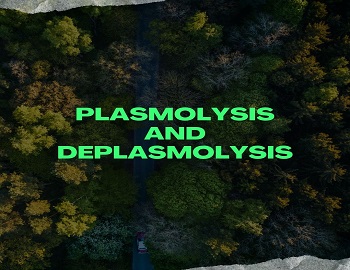

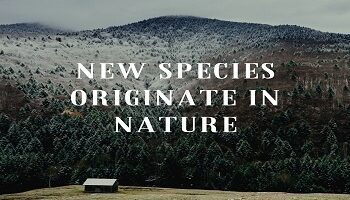



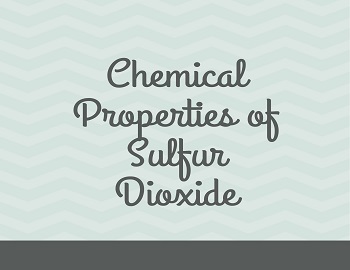

Comments (No)